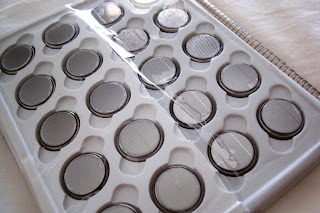 |
| Image Credit: Flickr |
Author: Phillip Fry, MSIV
Midwestern University – Arizona College of Osteopathic Medicine
Originally Published: Modern Resident February/March 2017
Patients presenting to the emergency department after ingesting a button or cylindrical battery typically warrant prompt foreign body removal. The majority of battery ingestion cases involves button batteries and occurs in children younger than six years of age.[1] However, there is also a growing number of ingestions in the elderly with hearing aid batteries being mistaken for pills.
There are several mechanisms by which a battery can damage the esophagus, which is the most common site of injury after ingestion. The flow of electric current from the battery through the surrounding tissue occurs near the negative pole, and can cause local hydrolysis, hydroxide accumulation, and corrosive tissue injury.[2] Even discharged or “dead” batteries still retain enough voltage to cause injury by producing an electric current.
A second method by which a battery ingestion can cause complications is the leakage of acidic contents. Once a battery makes it through the esophagus into the stomach, the acidity of the environment can erode the battery’s seal, releasing its contents. These contents cause liquefaction necrosis and saponification of lipid membranes.[3] Another major complication is pressure necrosis from the battery lodging at a single site, causing irritation, inflammation and ischemia. These complications lead to serious sequelae such as esophageal burns, perforation or fistulas.
It is important to determine both the type of battery ingested and the time of ingestion. Most large diameter (≥20mm) batteries are lithium cells and are associated with the most severe sequelae, including death.[4] Damage to the esophagus may be seen as early as two hours after ingestion, with most severe injury occurring after eight to 12 hours. Localization of the battery through radiographs and prompt removal in symptomatic or asymptomatic individuals are the proper next steps. If left untreated, button batteries in the esophagus can lead to complications including perforation, stricture, fistula, massive hemorrhage and death.
References:
1. Litovitz T, Whitaker N, Clark L. Preventing battery ingestions: An analysis of 8,648 cases. Pediatrics. 2010;125(6):117.
2. Litovitz TL. Button battery ingestions. A review of 56 cases. JAMA. 1983;249(18):2495.
3. Kost KM, Shapiro RS. Button battery ingestion: A case report and review of the literature. J Otolaryngology. 1987;16(4):252.
4. Litovitz T, Whitaker N, Clark L, White NC, Marsolek M. Emerging battery-ingestion hazard: Clinical implications. Pediatrics. 2010;125(6):1168.
